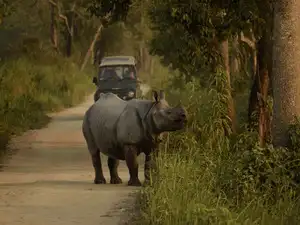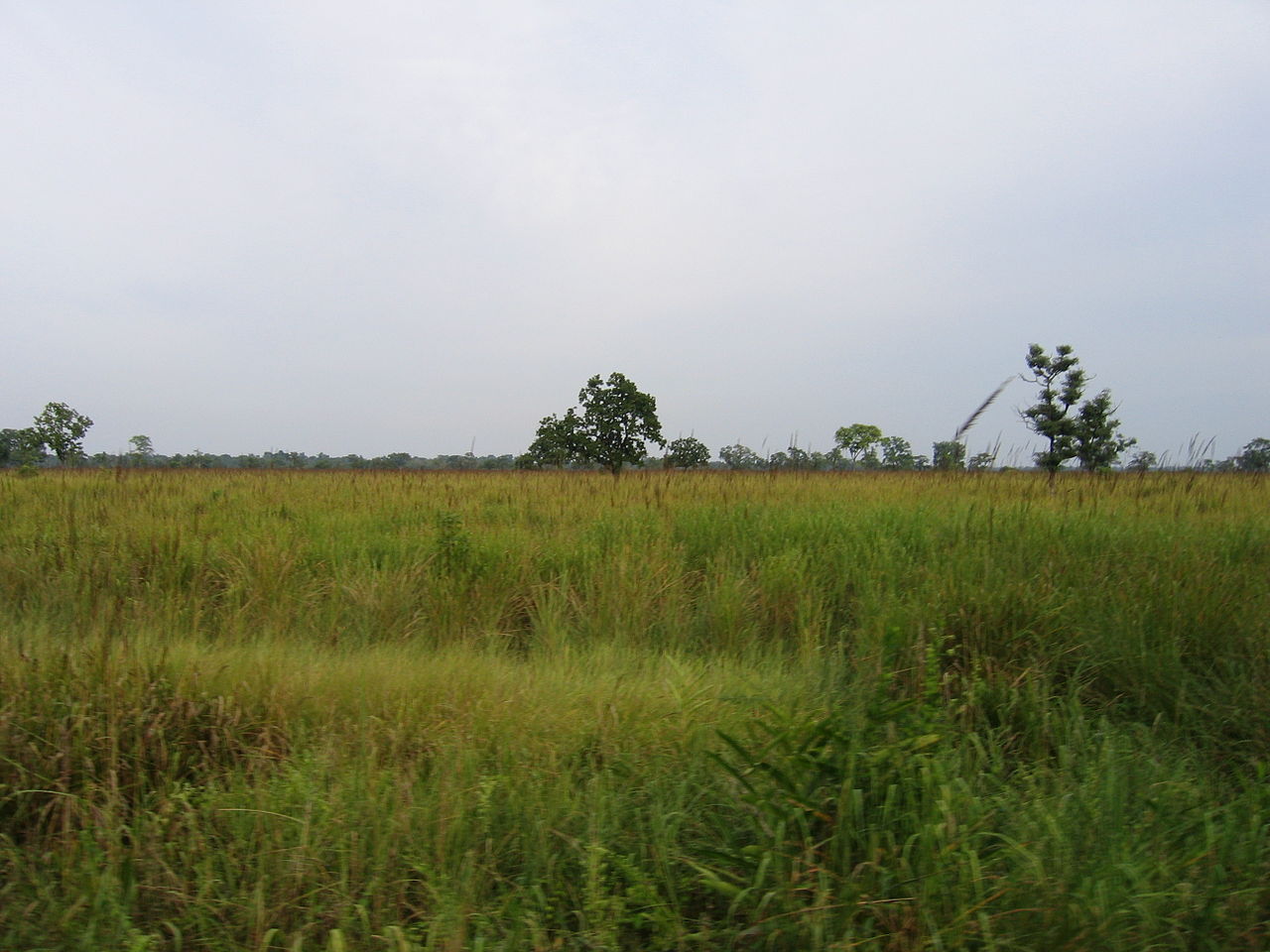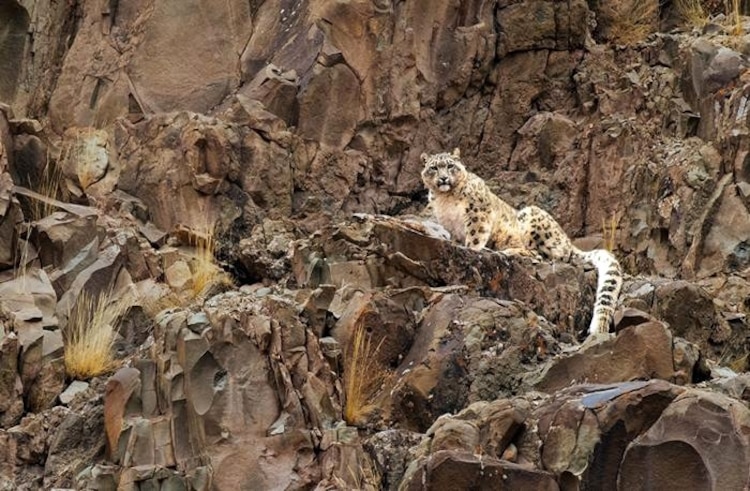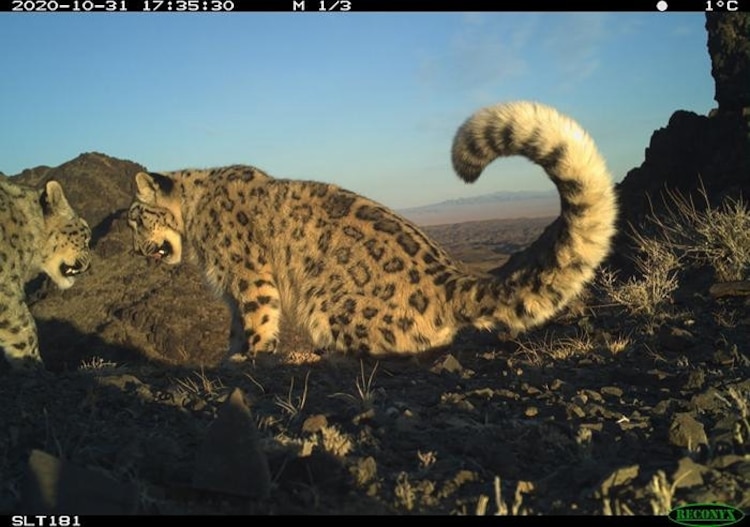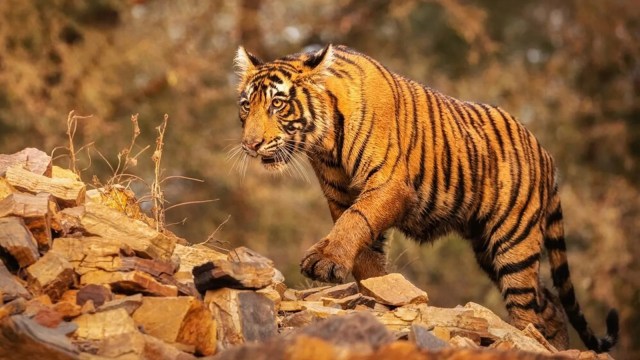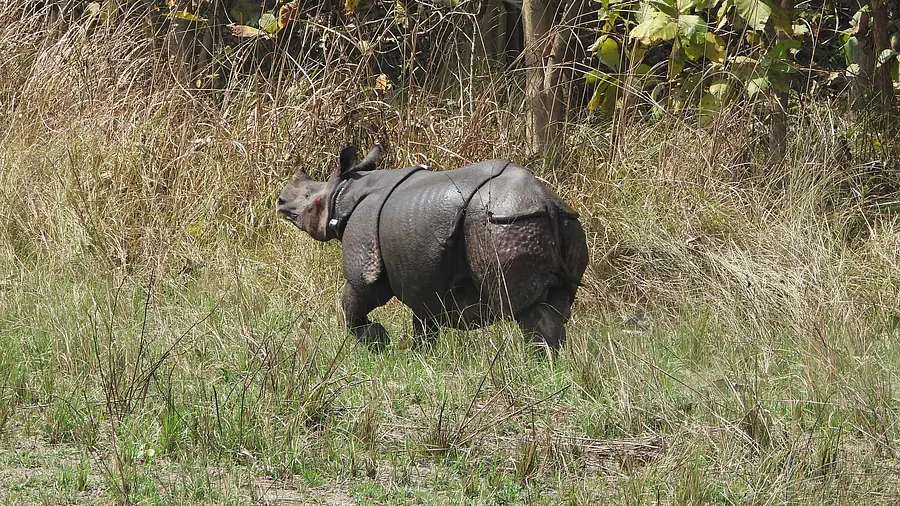 |
| Women collecting mangrove saplings in the Sundarbans. |
The Sundarbans is an immense expanse of mangrove forest, threaded by a labyrinth of tidal channels where the Ganges, Brahmaputra, and Meghna rivers converge before meeting the Bay of Bengal. Spanning the border between India and Bangladesh, this UNESCO World Heritage Site is one of the world’s richest and most fragile ecosystems. It is home to an extraordinary range of wildlife, including a population of tigers unlike any other. In this watery realm, tigers have adapted to an amphibious existence, swimming vast distances between forested islands in pursuit of prey such as fish and crabs. With an estimated 125 tigers living across the region in Bangladesh and around 88 on India's side, their population remains resilient. Yet as deforestation accelerates and human settlements push ever closer to the forest’s edge, encounters between people and predators have become increasingly unavoidable. Official records of such conflicts are limited, but estimates suggest that 300 people and 46 tigers have lost their lives over the years. Most of the human victims are men who enter the forest to fish or to gather honey and firewood. Their absence is etched into village life through the presence of so-called “tiger widows.” Known locally as swami khejos, or “husband eaters,” these women have long been burdened with stigma, blamed for tragedies beyond their control. Branded as outcasts, many are denied livelihoods and excluded from government compensation, particularly where deaths are linked to illegal forest entry. Left with little means of support, they must navigate a life shaped by loss and isolation. Among them is Malati Mondal, whose husband was killed by a tiger nearly a decade ago while fishing in the creeks of the Sundarbans.
 |
| A tiger wearing a radio collar on a riverbank in the Sundarbans, having been released by wildlife officials after being caught too close to human habitation. |
But a new conservation effort is beginning to shift that story. Designed to support tiger widows and their families, the initiative seeks not only to restore livelihoods and dignity, but also to heal the fragile environment on which both people and wildlife depend. Known as Mountains to Mangroves, the program is led by Conservation International and stretches from the Himalayas to the Sundarbans, with the ambitious goal of restoring one million hectares of forest. In the Sundarbans, its work is centred on the Jharkhali region along the Matla River. Here, the project is being led by 26-year-old Shahif Ali, founder of i-Behind The Ink, a social enterprise running a youth-led rewilding initiative. Ali has brought together tiger widows and other local women to revive 100 hectares of mangrove forest. At present, more than 100,000 native mangrove saplings are being planted across 40 hectares of coastline between the villages of Laskarpur and Vivekananda Palli. Raised and carefully tended by the women over the past six months, the young trees are now being set along a single embankment—the community’s only defence against rising seas and storm-driven floods. The aim is to regenerate dense mangrove cover lost to farming and fishing, while strengthening natural protection against cyclones that are growing ever more frequent and intense as the climate warms. The restored forest is also expected to slow the spread of saltwater intrusion, which threatens mangrove health, degrades farmland, and disrupts fish populations. Over time, as fish return, both people and predators may find more abundant food—reducing the likelihood of conflict. Malati Mondal is one of seven tiger widows currently taking part among a group of 59 women. Twenty more widows are set to join later this month, and according to Ali, interest is growing rapidly. The women earn around 300 rupees a day—modest by most measures, he says, but enough to bring meaningful change.
 |
| An aerial view of a fishing boat in the Sundarbans. Fishermen who venture deep into the forests are at risk of tiger attacks. |
There is a quiet power in the fact that women who once lost their husbands to tigers are now helping to safeguard the future of the Sundarbans. Through their work, mangrove forests are beginning to recover, livelihoods are being rebuilt, and dignity—long denied—is slowly being restored. Paid for their labour and recognised for their contribution, these women are reclaiming a place within their communities. Mountains to Mangroves is not the only effort breathing new life into this landscape. In 2005, a local organisation known as Jharkhali Sabuj Bahini—the Jharkhali Green Army—was founded by Akul Biswas, a visually impaired environmentalist who found purpose in tree plantation. What began with roadside planting took on new urgency after Cyclone Aila struck in 2009, revealing the vital role mangroves play in shielding the land from saltwater intrusion and flooding. Biswas launched a campaign to restore mangrove cover, drawing in villagers from all walks of life—children, people with disabilities, homemakers, and tiger widows among them. Over time, their efforts spread beyond Jharkhali, inspiring neighbouring communities to join the movement. Together, these initiatives offer a measure of hope for the Sundarbans’ long-term survival. Restoring this fragile ecosystem is not only about protecting forests or wildlife, but about rebuilding lives and easing decades of conflict. If the mangroves can recover, there is a chance that people and predators alike may once again learn to share this shifting, water-bound world.











.jpg/2560px-Nilgai_(blue_bull).jpg)


.jpg/1280px-Bandipur_National_Park_(30369384488).jpg)

